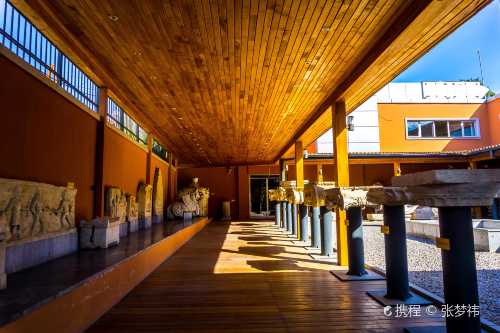Popular Trip Moments
2-Day Ephesus & Selcuk Trip on a Budget - All for Just $100 | 5 Days in Turkey Shattered My Spending Perspective | Travel back in time at the ruins of Ephesus, where you can feel the breath of ancient Rome | 【Turkey】The Severely Underrated Ancient City of Sardis | Ephesus: One of the Seven Wonders of the World | Exploring the Ancient City of Ephesus | The House of Mary, a sacred place of prayer where the Virgin Mary is said to have spent her final years. | Ancient Ruins of Ephesus in Turkey: A Testament to Past Prosperity | TURKIYE | 📚 House of Wisdom Where Time Stopped – Library of Celsus 🏛️☀️ | Ancient City of Ephesus in Türkiye | Visited the Site of the Council of Ephesus | Basilica of St. John- The Hill of the Beloved Disciple! | Ephesus: Wonders of the Ancient World | Greece and Turkey Travel Guide | A Journey Through Millennia: The Magnificent Heracles Gate and the Victory Goddess | Aegean Soul: My Serene Escape to Izmir | A vacation to Turkey | Turkey Romantic 5-Day Travel Guide | Walking Through Time: Unearthing the Wonders of Ancient Ephesus | The Temple of Artemis, where only the stone pillars remain | Sirince, with its impressive red Greek-style roofs | selcuk | House of the Virgin Mary: A Sacred Pilgrimage in Ephesus | Temple of Ephesus | Traces of the ancient city | Library of Celsus | Temple site | Temple of Artemis | 🚢 Sail into Paradise: Cruises in Turkey! 🇹🇷✨ | Finally Following "Flowers and Youth" to the Fairy City After 10 Years
Recommended Attractions at Popular Destinations
Popular Attractions in Bangkok | Popular Attractions in Manila | Popular Attractions in Tokyo | Popular Attractions in Taipei | Popular Attractions in Hong Kong | Popular Attractions in Seoul | Popular Attractions in Kuala Lumpur | Popular Attractions in Los Angeles | Popular Attractions in Shanghai | Popular Attractions in New York | Popular Attractions in Shenzhen | Popular Attractions in Osaka | Popular Attractions in Singapore | Popular Attractions in London | Popular Attractions in Guangzhou | Popular Attractions in San Francisco | Popular Attractions in Beijing | Popular Attractions in Macau | Popular Attractions in Bali | Popular Attractions in Jakarta | Popular Attractions in Paris | Popular Attractions in Ho Chi Minh City | Popular Attractions in Istanbul | Popular Attractions in Phuket | Popular Attractions in Chicago | Popular Attractions in Seattle | Popular Attractions in Toronto | Popular Attractions in Orlando | Popular Attractions in Cebu | Popular Attractions in Chiang Mai
Popular Restaurants in Selcuk
Nur restaurant | Ejder Restaurant | Gaziantep Kebab Salonu | Hitit Restaurant | Kirkinca Arsipel Restaurant | Ufuk Pide | Kahvecin | Yedi Bilgeler Restaurant | Boomerang Guesthouse & Restaurant | Yavuz'un Yeri | Seckin Cigerci | Maza Kitchen | Sisguzar Yiyecek ve Iceecek | Selcuk Koftecisi | Okumus Mercan Restaurant | Sirince'm Sakli Vadi | Gulgun Abla'nin Yeri | Can restaurant | Tolga Cop Sis | Ayse Hanimin Yeri | Şirince Keyfince Cafe Restaurant | selcuk pidecisi | Tat Cafe Restaurant | Seçkin Firuze Restaurant | orhanbey cigercisi selcuk | St. John Cafe Shop | Kahve Hatırası | Haci Baba | Zeus Cafe & Restaurant & Wine House | Agora Restaurant
Popular Ranked Lists
Popular Luxury Hotels in Sorrento | Top 50 Must-Visit Restaurants in Nanjing | Popular Trending Attractions in Paris | Popular Trending Attractions in Luoyang | Popular Premium Hotels in Tehran | Top 10 Local Restaurants in Lushan Global Geopark | Popular Trending Attractions in Tianjin | Top 20 Must-Visit Restaurants in Hefei | Popular Premium Hotels in Alexandroupolis | Top 10 Luxury Hotels near Fishers | Top 50 Must-Visit Restaurants in Santorini | Top 10 Luxury Hotels near Calasiao | Popular Luxury Hotels Near Smaliavichy District | Top 10 Trending Attractions in Kyoto | Popular Trending Attractions in Anji | Popular Luxury Hotels Near Port Macquarie | Popular Trending Attractions in Chengdu | Popular Trending Attractions in New York | Top 50 Must-Visit Restaurants in Wuhan | Popular Premium Hotels in Destin | Top 10 Luxury Hotels near Sin el Fil | Top 50 Must-Visit Restaurants in Shenzhen | Popular Luxury Hotels Near Alexandroupolis | Top 50 Must-Visit Restaurants in Shanghai | Popular Trending Attractions in Changzhou | Popular Trending Attractions in Dujiangyan | Top 10 Luxury Hotels near Krasnogorsky District, | Popular Trending Attractions in London | Top 10 Trending Attractions in Harbin | Popular Luxury Hotels Near Miri
About
Payment Methods
Our Partners
Copyright © 2025 Trip.com Travel Singapore Pte. Ltd. All rights reserved
Site Operator: Trip.com Travel Singapore Pte. Ltd.
Site Operator: Trip.com Travel Singapore Pte. Ltd.

























